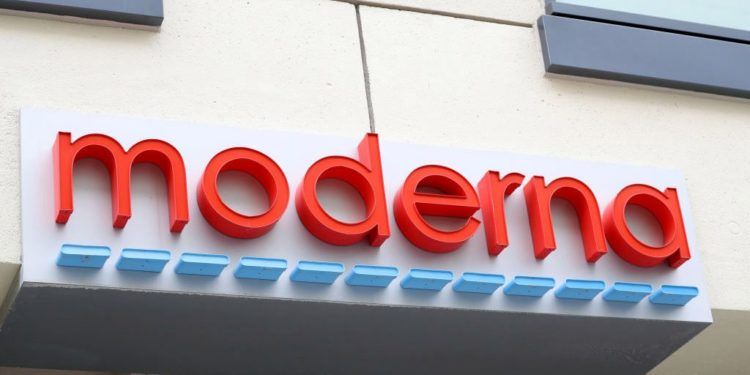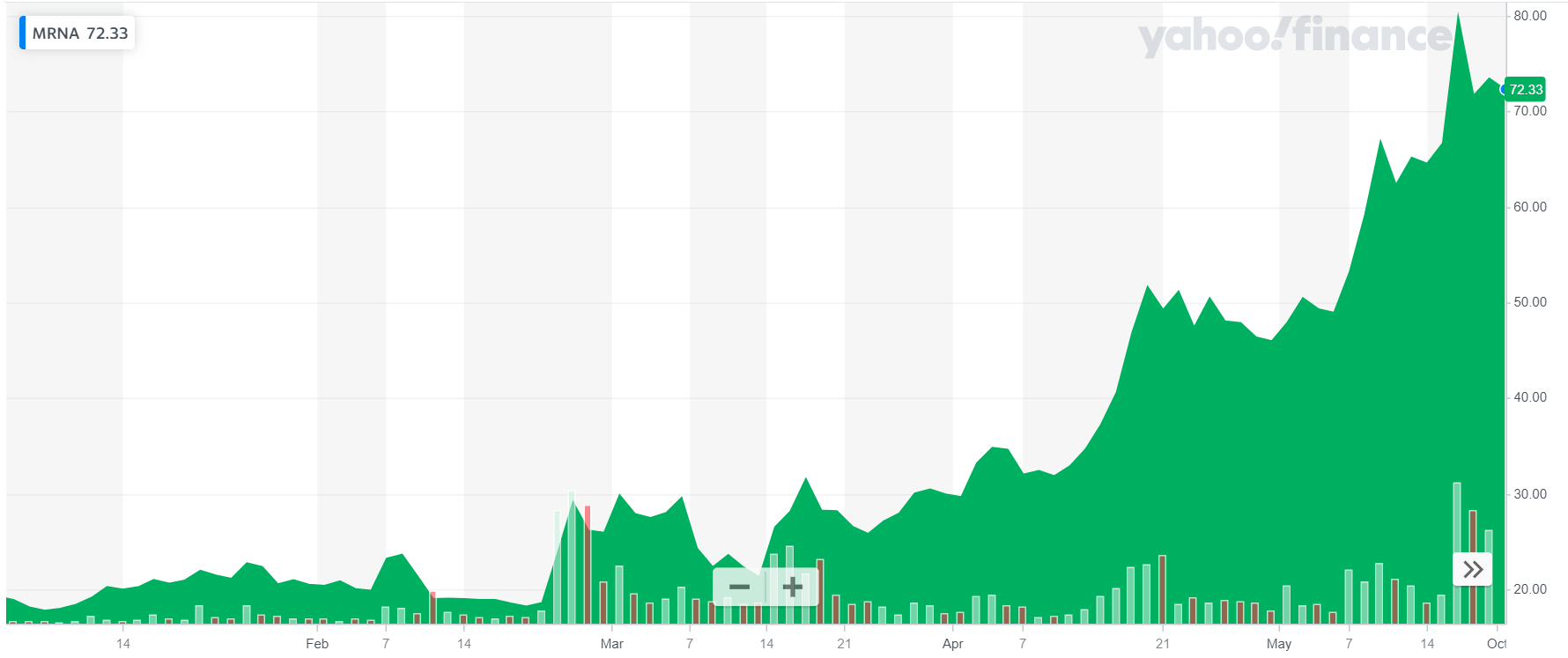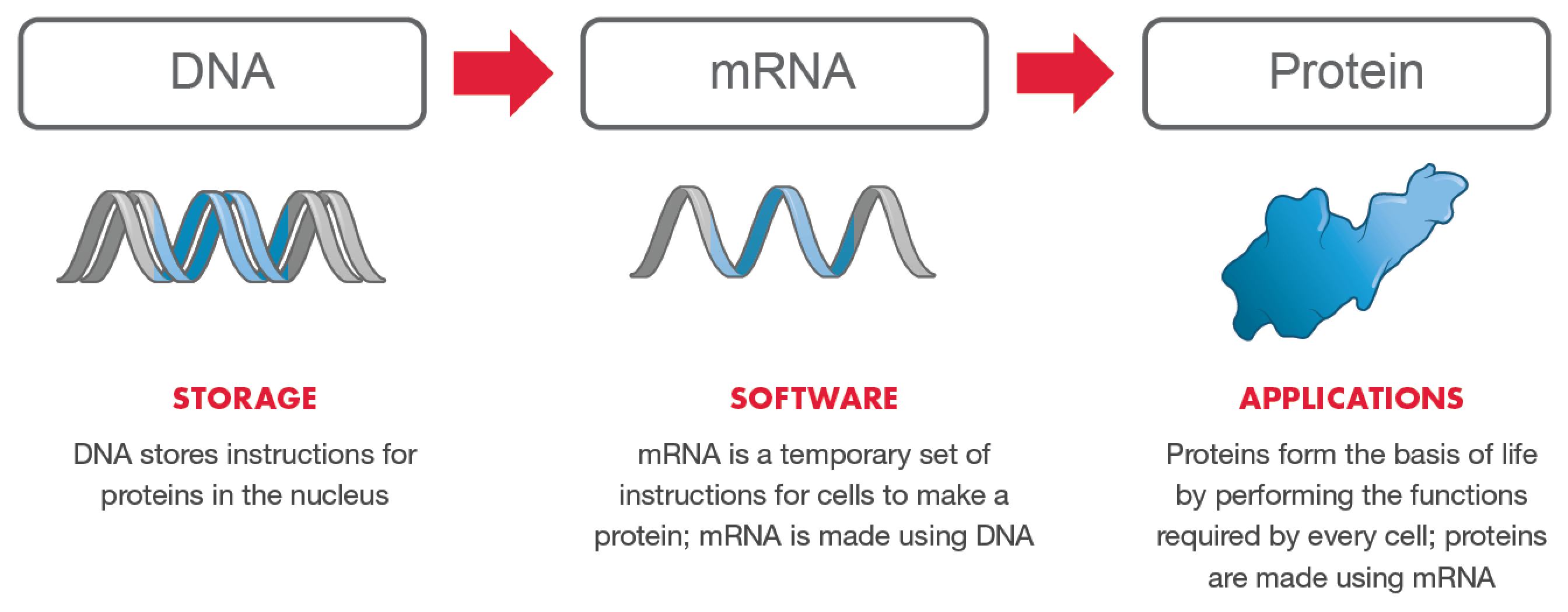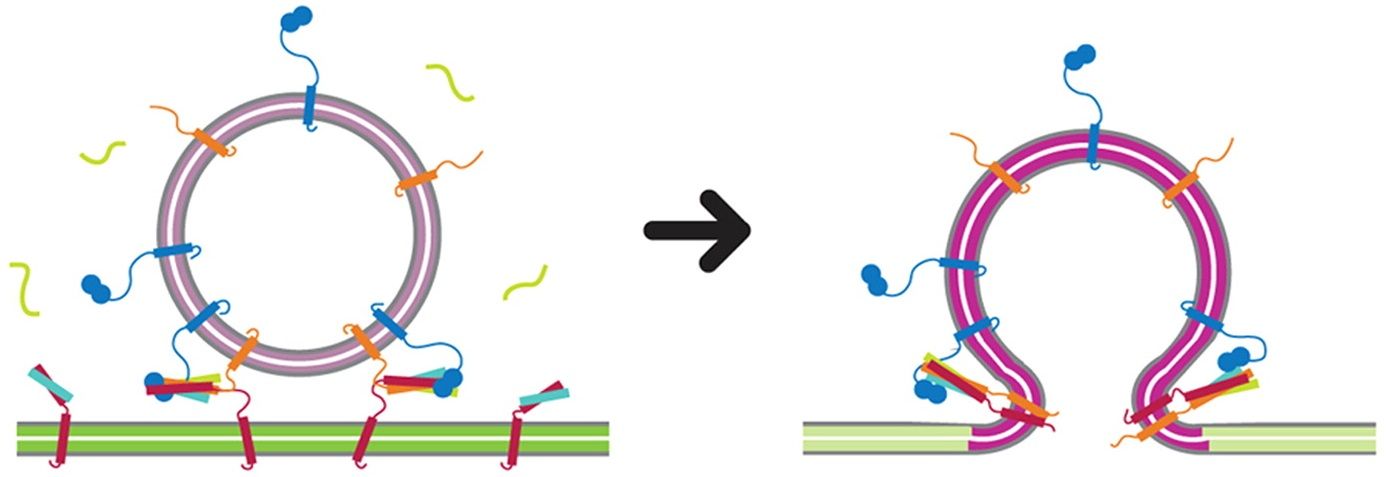How Moderna is winning the race to a COVID-19 vaccine

On Monday, Moderna posted early results for mRNA-1273, demonstrating that a single low or mid-dose injection could elicit an immune response in just 8 days. “The levels of neutralizing antibodies at day 43 were at or above levels generally seen in convalescent sera.” These data are from a mere 8 of 45 patients and the trials demonstrating protection are forthcoming.
Not surprisingly, the $MRNA stock jumped over 20% on the announcement. The jump was tempered somewhat when it was pointed out that the company had used corporate speak, and "above those generally seen" is fairly meaningless.
Still, 8/8 tested for neutralizing antibodies (so far) ain't bad. Moderna seems confident investors will be willing to buy in as well, given that they released a prospectus for $1.25B in additional equity offerings on May 18 and have already received clearance for their Phase II trials.

Why Moderna was interesting before this
What is perhaps most interesting is that this vaccine candidate was synthesized and initiated into Phase I clinical trials in just 63 days from Moderna receiving the COVID-19 sequence. Moderna received approval for their Phase II trial IND (Investigational New Drug) application on May 6, and expects to launch a Phase III trial sometime this summer. In the words of the somewhat bemused sounding CEO, mRNA-1273 could enable their first BLA to be filed years ahead of schedule.
But RNA doesn't really do much of anything by itself. mRNA, the product that Moderna synthesizes as a drug, is merely the message that encodes a functional protein. It could be a viral or tumor protein (in the case of a vaccine), a functional secreted protein (currently they are developing secreted proteins to activate the immune system), or an antibody.

But delivering the mRNA has a couple of key advantages:
DNA and RNA are cheap to synthesize. Like really cheap.
DNA and RNA can be synthesized artificially in vitro (in a test tube) for pennies per base and in hours. Compare this to manufacturing a protein drug for the clinic. A certified, highly analyzed cell line must be created and banked in quantities that would survive the life of the drug. Then the cells must be cultured to create the protein over a period of weeks (going from a few cells to thousands of liters) before being purified in a series of columns designed to separate it from all the other proteins in a cell. It's a messy, technical, and expensive process.
Did we mention it's fast?
Although each batch undoubtedly has rigorous documentation requirements, if you have perfected a process to synthesize, package, and purify one RNA sequence, you can apply it over and over and over. The economies of scale really kick in here. Compare this to developing a novel protein therapeutic, which often requires bespoke validation of not only the cell line but also the purification process, with many months of trouble shooting if things don't go as expected.
This is really how Moderna is beating out the competition. They spent the last 10 years developing first optimizing the synthesis and delivery mechanisms, then building computational and manufacturing resources to support it.
Ok, but how does it work?
Moderna has raised approximately $3.7B for their mRNA technology, but it has taken over 10 years to become an overnight success. Although the website and corporate press releases makes much of the fact that they are delivering mRNA, it is rather light on details as to how this works.
Free mRNA is notoriously unstable, as any first-year graduate student tasked with isolating it will tell you, and rapidly degrades in the blood stream. Moderna (and others) use instead modified nucleosides - altered nucleotide bases which are naturally found in DNA and RNA. These both prevent destruction by mRNAses, proteins designed to destroy mRNA, but also detection by Toll Like Receptors. Think of Toll Like Receptors as the dogs for your immune system - they're really good at detecting unusual things in your body and setting off alarms, but they aren't super accurate for what passes as unusual and mailmen delivering packages really hate them.
Second, the mRNA has to get into your cells to be converted into protein. For this they use Nano Lipid Particles (NLPs) - essentially they wrap the mRNAs in the same stuff your cells are made out of. These droplets stick to cells and drop the RNA in. This method won't be particularly specific as to what cell it hijacks, but it's effective in its dumb simplicity. The RNA is eventually broken down so there is little concern about long term effects.

Once inside your cell, the RNA gets translated to protein by the cellular machinery. There are some technicalities around how much protein is made, controlled by the "tails" at either end of the protein coding portion of the mRNA. This is presumably part of the proprietary computational optimization software that Moderna claims, but since they are light on details it's difficult to say. It could be as simple as picking the right promoting sequences for the cells you think will be most hit with your NLP packages, or as complicated as modeling the folding of the sequence and preventing kinking.
Are they competitive?
Moderna is not the only company trying to deliver mRNA as a therapeutic. A quick search will net you lists of companies in this space[1, 2, 3]. Despite their heavy patent portfolio, many of the optimization and delivery techniques they describe are available for use by other companies. What really differentiates them is infrastructure. They have the head start and reserved capital to move quickly (let's say in the case of a global pandemic), they have a corporate strategy focused on key verticals, and they have their own manufacturing facility. Since this field is relatively new, there are few clinical grade Contract Research Organizations (CROs) capable of rapidly delivering products so this facility is a key barrier against competition. Unknown is whether this modest lead will prove defensible in the long term, and whether their optimization strategy will pan out in delivering robust vaccines. We're likely to find out soon.
Disclaimer
None of the above should be construed as investment advice. I'm just a PhD digging through the biology behind biotechs and not a certified investment analyst. PhDs are notoriously bad at financial analysis, else they'd never agree to get paid $30k/yr for 5-6 years. Talk to your financial advisor before buying and selling equities.
